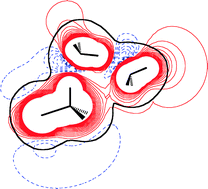Quantum-chemical study and FTIR jet spectroscopy of CHCl3–NH3 association in the gas phase
Abstract
High level ab initio quantum chemical calculations have been performed on the association of

* Corresponding authors
a
Department of Chemistry, University of Sheffield, Sheffield S3 7HF, UK
E-mail:
M.Hippler@sheffield.ac.uk
b Institut für Physikalische Chemie, Universität Göttingen, D-37077 Göttingen, Germany
High level ab initio quantum chemical calculations have been performed on the association of

 Please wait while we load your content...
Something went wrong. Try again?
Please wait while we load your content...
Something went wrong. Try again?
M. Hippler, S. Hesse and M. A. Suhm, Phys. Chem. Chem. Phys., 2010, 12, 13555 DOI: 10.1039/C0CP00530D
To request permission to reproduce material from this article, please go to the Copyright Clearance Center request page.
If you are an author contributing to an RSC publication, you do not need to request permission provided correct acknowledgement is given.
If you are the author of this article, you do not need to request permission to reproduce figures and diagrams provided correct acknowledgement is given. If you want to reproduce the whole article in a third-party publication (excluding your thesis/dissertation for which permission is not required) please go to the Copyright Clearance Center request page.
Read more about how to correctly acknowledge RSC content.
 Fetching data from CrossRef.
Fetching data from CrossRef.
This may take some time to load.
Loading related content
